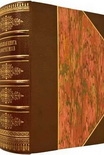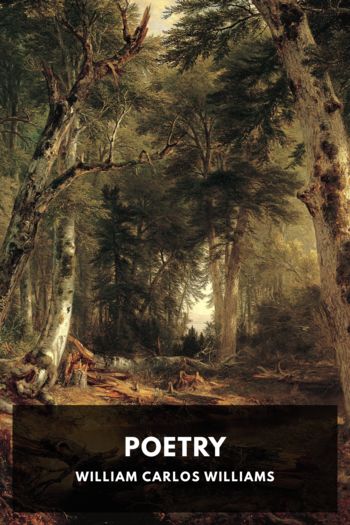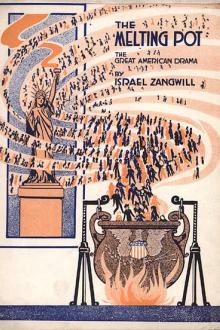No Modernism Without Lesbians, Diana Souhami [love books to read txt] 📗

- Author: Diana Souhami
Book online «No Modernism Without Lesbians, Diana Souhami [love books to read txt] 📗». Author Diana Souhami
cultural forces
In her writing, as in her life, Natalie scoffed orthodoxies, heterosexuality and male traditions of style and narrative. She was dismissive of the literary elite:
mind pickers and culture snobs… I do not understand those who spend hours at the theater watching scenes between people whom they would not listen to for five minutes in real life.
She wrote mainly in French, in which she became fluent. As a child in Washington she had a French governess; America looked to Europe for its culture. In her teens she went to a girls’ boarding school, ‘Les Ruches’ (‘The Beehives’) in Fontainebleau. The school’s headmistress, Marie Souvestre, was lesbian and founded the school with her partner, Caroline Dussaut. They separated in 1883; Marie Souvestre went to England with another teacher, Paolina Samaïa, and together they started Allenswood, a school for girls in Wimbledon. Among their pupils were Dorothy Strachey1 and Eleanor Roosevelt, who married her distant cousin Franklin Delano Roosevelt. When first lady of America, Eleanor took as her lover Lorena Hickok, known as Hick, a reporter with Associated Press. Hick moved in to the White House and stayed with Eleanor for most of the twelve years of Roosevelt’s presidency. Eleanor kept a photo of Marie Souvestre on her desk.
When she was eighty-three, Dorothy Strachey wrote the novel Olivia about being a pupil at Allenswood, and her passion for Marie Souvestre (Miss Julie). Published by the Hogarth Press in 1949, the year the censorship of Radclyffe Hall’s The Well of Loneliness was finally lifted, and dedicated ‘To the beloved memory of V.W.’ (Virginia Woolf), Dorothy Strachey said she wrote Olivia to please herself ‘without considering whether I shock or hurt the living, without scrupling to speak of the dead’. She wanted to recapture the emotions she felt when she was sixteen. To do so, she said she needed to overthrow the theories and dictates of ‘the psychologists, the psychoanalysts, the Prousts and the Freuds’, whom she accused of ‘poisoning the sources of emotion’, of applying ‘poisonous antidotes’ to the romantic realities of life.
‘Love has always been the chief business of my life,’ Dorothy Strachey, like Natalie Barney, wrote. Her childhood passion was succeeded by other loves. Nonetheless, at the grand age of eighty-three she ‘felt the urgency of confession’, the need to assail and stand up to the cultural forces that had compelled her to conceal her deepest feelings, kept her ‘from any form of unveiling’, forbidden her ‘many of the purest physical pleasures’ and denied her literary expression of who she quintessentially was.
It was a heartfelt cry from an old woman. Dorothy Strachey died in 1960 at the age of ninety-four.
So as a girl Natalie learned something of how to be lesbian and a lot of how to speak French. ‘Being bilingual is like having a wife and a mistress, one can never be sure of either,’ she said. Writing in French freed her from Washington constraints of expression but restricted her readership. In her lifetime she published, mostly privately, five volumes of poetry, three of epigrams, two of essays and three memoirs. She did not write stories with a linear narrative, paragraphs and chapters. For punctuation, she favoured ellipses and dashes. She liked fragmented ideas – ‘scatterings’, she called them, pensées, maxims, aphorisms – the stuff of short attention span. She wrote some poetry in English. Her only novel in English was semi-autobiographical: The One Who Is Legion. Her writing was personal, her topics same-sex love, feminism, Hellenism, pacifism, paganism… Unambitious for professional success, the life she lived was the work of art that mattered.
Eva Palmer and Sappho
Natalie met Eva Palmer on vacation in Bar Harbor in Maine in 1893. She called her ‘the mother of her desires’. Natalie was eighteen, Eva was twenty. They began a relationship that lasted a decade and set the paths of both their lives. Over that period they exchanged about a thousand letters. Bar Harbor was a summer resort for the wealthy and the Barney ‘summer house’, castellated in the style of an English castle, had twenty-six rooms. Eva’s family too was hugely wealthy. Her father, Courtlandt Palmer, was heir to a million-dollar fortune made in real estate, though he died when she was fourteen, several years before she first met Natalie.
Eva Palmer-Sikelianos © Wikimedia Commons
Eva had studied classics at Bryn Mawr college. Both she and Natalie dignified same-sex desire by reference to the mores of classical Greece. Eva wanted to live the ideals of Sappho. Both she and Natalie dreamed of a utopia, modelled on Sappho’s community on the island of Lesbos, where creative women supported and loved each other.
Eva’s plan had an intellectual underpinning but she was in thrall to Natalie’s verve, courage and braggadocio. She fell in love with her and idealized this love with reference to Sappho’s writing:
Your letter folds me as closely as your arms and touches me as marvelously as your lips, I am bound by it as though all your body were over me, held by it as by your eyes when they glitter like jewels in the sun. My poet, my mistress, my lover! I love you all ways tonight, but most of all for the grace of your lines.
Sappho
Though mere fragments of Sappho’s poems and thoughts survive, these were inspiration to the lovers and poets in Natalie’s circle. They learned Greek to understand Sappho and wrote verse in homage to her.
Sappho was born in about 612 BC at Eressos, a seaside village in south-west Lesbos. She came from an aristocratic family, married, had a daughter and was widowed young. In a political dispute, she was exiled from Lesbos to Sicily. When she returned, she set up a school for music and dance for girls in Mytilene, the capital of Lesbos.
This school became her life. The themes of her poetry were the pleasures and pains of her all-female community. These poems, written to be recited, used the vernacular of Lesbos. They revealed





Comments (0)